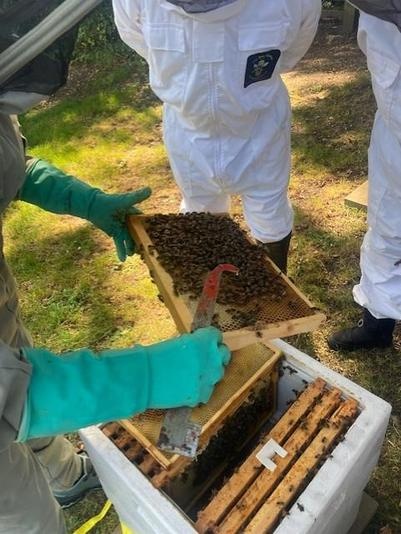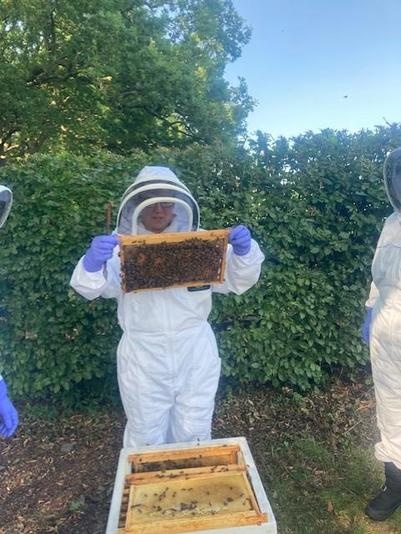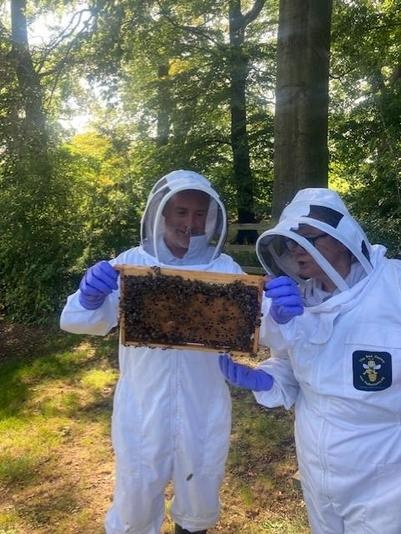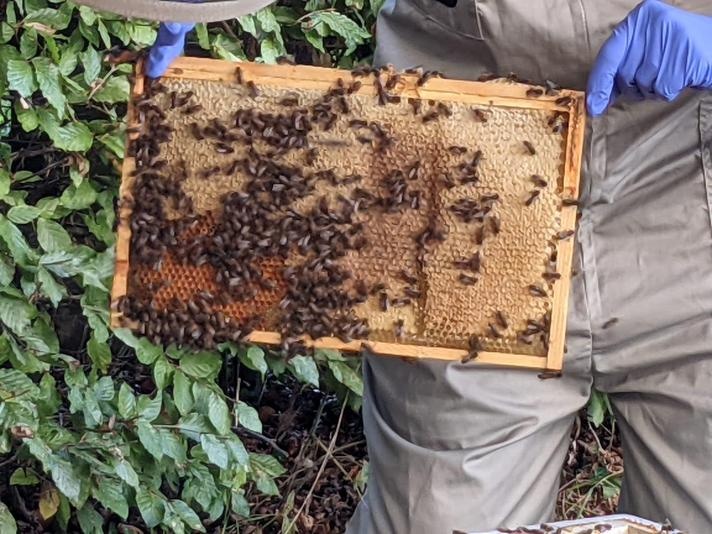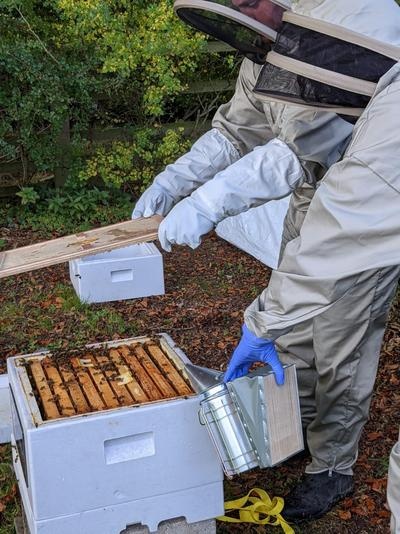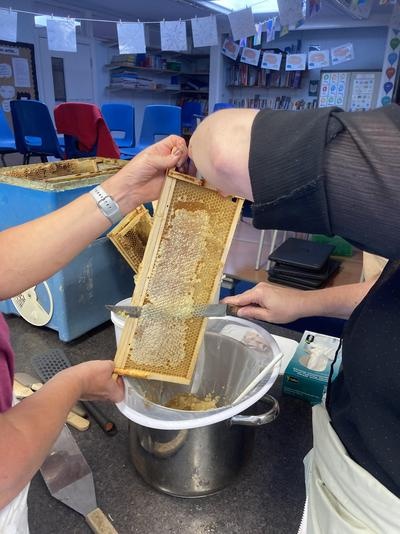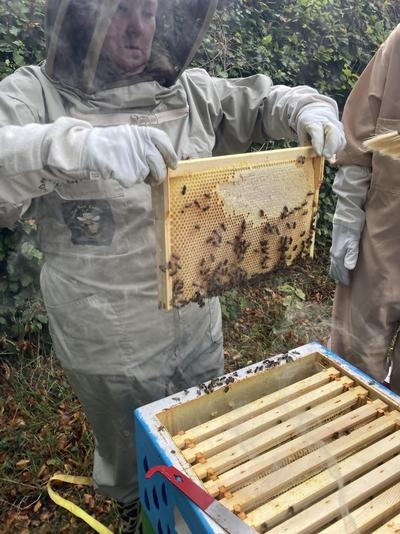WWBees
Buzzing about Bees at WWB
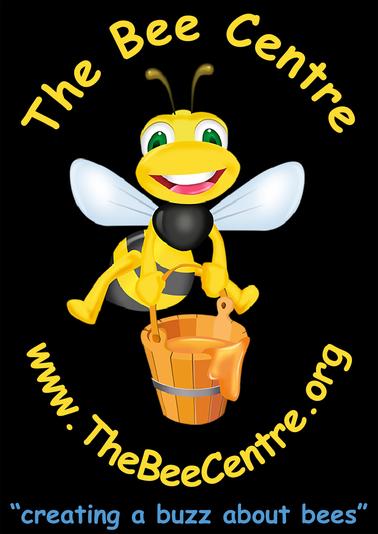
The Honey Bees at WWB



Bees at WWB
At WWB we want to provide a full and varied curriculum for all our pupils, which includes extending the learning and life experiences of our children through our many and varied activities and clubs.
By establishing an apiary within our fantastic school grounds and utilising the experience and enthusiasm of beekeepers within our school and those from the Bee Center, we hope to bring exciting new opportunities for our children, staff, parents and wider school community as well as playing our part in protecting and enhancing our natural environment.
Creating a small apiary will provide the children with many exciting cross curricular opportunities
Our Bee journey has just begun at WWB. There has been a real 'buzz' of excitement from the staff involved and especially the children. Simon and Kath, from the Bee Centre in Chorely, came and delivered training to the new WWB Bee Team (We haven't quite agreed that this is the right name for us just yet!)
As part of our package, the school has received 3 hives, equipment needed to inspect the hives and suits for two adults and 6 children. We can't wait to get started fully but have to allow the bees to settle in before we start disturbing. (There may be a wait for all you honey lovers too, as we need to establish and let everything build up.)
One hive has been set up and we have around 10,000 bees working away for the Queen! They will be back to help us get the hive ready for winter and then in Spring to split it into to the other hives.
Here are a few interesting bee facts
- Bees are the only insect in the world that make food that people can eat.
- Honey contains all of the substances needed to sustain life, including enzymes, water, minerals and vitamins.
- Eating honey can help make you smarter! It is the only food to contain ‘pinocembrin’ that is an antioxidant that improves brain function.
- One bee will only make 1/12 of a teaspoon on honey in its entire life.
- Many plants rely on insects like bees in order to be pollinated; which is why they provide nectar to say thanks
- A colony of bees can contain between 20,000 and 60,000 bees, but only one queen bee.

Training day and our Bee Team
First Inspection
We have had the bees in school now for well over 5 weeks and they have been fed with a mixture of sugar and water to compliment them using their natural surroundings. We have been really eager to have a look inside and see what has been happening. On Monday (11.10.21) Mrs Carter and Mr Stell opened up the hive for the first inspection. We were looking for signs within the hive that it was healthy and every little bee was working hard. Although we didn't see the Queen on this inspection, there were plenty of signs that she is still working well and the hive seemed very healthy. See below the images of our first inspection.
Learning on the job!
It is safe to say that our first year of beekeeping has been a learning curve and certainly eventful. The Bees have kept us really busy. 2022 is being referred to as the year of the swarms and we have had our fair share. We have had to act quickly in order to collect them safely and have managed to rehouse most of them. With each swarm, we have grown in confidence when collecting and tried to understand why this has happened.
It is important to know that Honey bee swarms are not highly dangerous under most circumstances. Swarming honey bees feed prior to swarming, reducing their ability to sting. Further, bees away from the vicinity of their nest (offspring and food stores) are less defensive and are unlikely to sting unless provoked.
Here are some images of the swarms we had to collect earlier this year.
Show me the HONEY!
19.09.22
This morning, the WW- Bee team completed our first harvest of surplus honey from our hives. It was a fantastic experience, and we are looking forward to jarring it up and sharing with the families of WWB.
Bee Safety
Honey bees sting only as a last resort, when a worker bee stings, she is mortally wounded and dies. Careful handling and quiet behaviour at the hive therefore reduce the risk of a sting, but suffering the occasional sting cannot be ruled out for anyone dealing directly with bees.
Wearing appropriate protective clothing is essential, as this too, significantly reduces the chance of being stung. The sting apparatus of the honey bee has its own ganglion, (nerve mechanism) the sting is barbed and fixes into skin, once embedded, it is torn from the bee’s abdomen, and the apparatus continues to pump venom until the sting is removed.
The sting therefore should be extracted as quickly as possible to minimise the dose of venom. Contrary to the information in many text books, it makes no difference whether the sting is pinched out of the skin or flicked out. The valve mechanism in the sting apparatus prevents the flow of venom even when the sting is squeezed or squashed. It is simply important to remove the sting as rapidly, by whatever means is easily available.
Thank You

We would like to say a huge 'Thank You' to Harrison's Engineering:
THE FRONT STORE LTD

who have kindly donated an outdoor storage shed (and some other bits and bobs) to store our bee equipment in. They are located in Billington, and are available for tool hire and hardware.


After a busy season, we have harvested our first batch of honey!
However, due to it being so small with it being our first try, we are unable to offer it on general sale. We have about 20 jars and have decided to sell them via a BLIND AUCTION.
The jars will normally be priced at £6 but this time we are accepting blind bids (hopefully higher than £6...).
Bids can 'bee' made through submitting a form and placing it in the red letter box in the entrance way at school.
Happy bidding!















